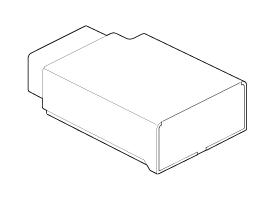 Kia Sportage: TPMS Receiver: Description and Operation
Kia Sportage: TPMS Receiver: Description and Operation
Third generation SL (2010Ц2016) / Kia Sportage SL Service & Repair Manual / Suspension System / Tire Pressure Monitoring System / TPMS Receiver: Description and Operation
| Description |

| 1. |
Mode
|
| 2. |
Overview
|
| Operation |
| 1. |
General Function
|
| 2. |
General Conditions to Learn New Sensors:
|
| 3. |
General Conditions to Un-Learn a sensor that is removed:
|
 TPMS Sensor: Repair procedures
TPMS Sensor: Repair procedures
Removal
Tire Removal
1.
Deflate tire & remove balance weights.
Sensor can be unscrewed before unseat the tire bead.
Х
The ...
 TPMS Receiver: Schematic Diagrams
TPMS Receiver: Schematic Diagrams
Schematic Diagrams
TPMS Receiver Circuit Diagram
Harness Connector
PinDescription1Battery2CAN_High3GND4-5-6-7IGN8CAN_Low9-10-11-12-
...
Other Information:
Instrument Cluster: Description and Operation
Description
ECO driving system
This system is designed to encourage eco-driving by providing real-time feedback to the driver.
The ECO indicator light assists you to drive in the most economical ...
Photo Sensor: Repair procedures
Inspection
1.
Ignition "ON"
2.
Using the scan tool.
3.
Emit intensive light toward photo sensor using a lamp, and check the output voltage change.
4.
The voltage will rise with higher ...
Categories
- Home
- Kia Sportage QL (2015-2019) Owners Manual
- Kia Sportage QL (2015-2019) Service Manual
- Kia Sportage SL 2010-2016 Owners Manual
- Kia Sportage SL 2010-2016 Service Manual
Copyright © www.kispmanual.com 2014-2024
